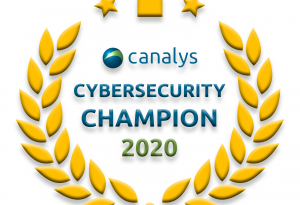How the Industry 4.0 Era Will Change the Cybersecurity Landscape

Today’s highly automated and connected smart factories (Industry 4.0) were born out of yesterday’s steam engines that mechanized manufacturing (Industry 1.0); mass-production lines expanded with the advent of electricity (Industry 2.0); and then IT-enabled manufacturing plants ushered in the era of connected industrial control systems with programmable logic controllers (PLC).
While enterprises struggle to enhance their operational efficiency, customer experience, logistics, and supply chain gains through IoT use, their malicious counterparts may be expending just as much resource to undermine their efforts. We have seen attacks adversely affect an enterprise’s bottom line in the past. Cases in point include a DDoS attack on Dyn’s servers that brought down major sites, including PayPal, Spotify, Netflix, and Twitter in October 2016 and an IT failure that drove British Airways to freeze thousands of its Executive Club frequent-flier accounts in March 2017 after confirming unauthorized activity from a third party.
In December last year, TRITON/TRISIS reared its ugly head, and can be considered the latest addition to ICS attackers’ armory. ICS lie at the core of the cyber-physical systems that characterize the Industry 4.0 era. The TRITON/TRISIS attack showed that at the hands of determined threat actors, a single piece of malicious code could have physical repercussions.
In the Industry 4.0 era, enterprises not only need to worry about the usual business disrupters—natural disasters, adverse publicity, and loss of key personnel, among others—but also increasingly sophisticated cyberthreats targeting critical infrastructure and the smart devices that we use to virtually control them. Modern ICS are prone to vulnerabilities that attackers can exploit to get into target networks. Industrial robots or any connected system that remains exposed can easily be scanned for vulnerabilities that, when exploited, can lead to the production of defective goods. Insufficiently secured IoT devices, when hacked, can be used to instigate DDoS and other business-crippling attacks.
We are bound to see more of these as companies increasingly embrace the advantages that smart factories, industrial robots, and the many other components that make up IIoT-enabled environments and the Industry 4.0 era offer. Enterprises will need to mitigate risks more than ever. They will need an integrated approach to security that begins with a cybersecurity framework. Any secure smart environment should have a sound foundation that uses next-generation intrusion detection and prevention, application whitelisting, integrity monitoring, virtual patching, advance sandboxing analysis, machine learning, behavior analysis, antimalware, risk detection, vulnerability assessment, next-generation firewall, anti-spear-phishing, spam protection, and data leakage technologies. Deploying a risk-reducing architecture and staying abreast of the latest in cybersecurity (threats and possible mitigation steps) by relying on trusted partners are also a must to protect all connected devices and environments on all fronts.
Read more about mitigating risks in today’s smart environments in IIoT Security Risk Mitigation in the Industry 4.0 Era.
Read More HERE



